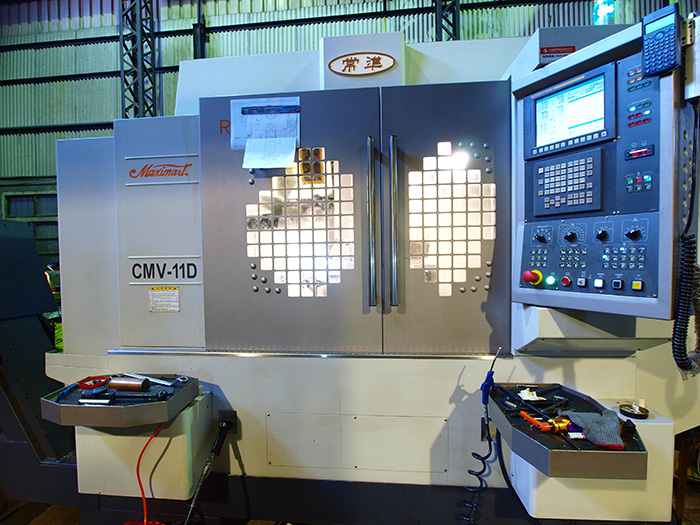How Does Temperature Affect CNC Machining?
CNC machining is a popular manufacturing process that uses machines such as lathes and mills to precisely cut and shape parts out of plastic, metal and other materials. Although it’s a reliable method for creating high-quality parts, it also generates heat, which can distort the parts it produces. To avoid this issue, those who use CNC machining must take steps to reduce the excess heat in their shop. In this article, we discuss the potential causes of heat in CNC machining shops and suggest tips for reducing the temperatures in these environments.

Table of Contents
Factors that Affect Temperature of CNC Machining
- The Environment
- The Machining Tools
- The Properties of Materials and Heat Treatment
How to Cool the Temperature of CNC Machining and Tools
- Facilities
- Regular Maintenance Is Essential
- Using Cooling Medium
- Remove Swarf Regularly
Conclusion
Factors that Affect Temperature of CNC Machining
- The Environment
CNC machining works best when the environment it’s in is at or near room temperature, but if your operation is in an area with extreme heat, then this may be difficult. To avoid damage to the machine due to the heat, the ambient temperature needs to be taken into account and extra measures like cooling systems and insulation must be put in place to ensure that it is running at recommended temperatures.
The heat output of a CNC machine while operating can be affected by external sources. Placing your CNC machine in a factory should be done with care, making sure that the frame is positioned far away from any significant heat sources such as an oven or boiler room. This helps to prevent additional heat gain from affecting the internal environment of the machining process. Additionally, the natural climate and process heat generated by the machine itself are unavoidable but can be managed with careful positioning of machinery and appropriate ventilation systems.
- The Machining Tools
If the temperature of the tool is too high, it can cause thermal deformation and expansion of the machine, leading to lower accuracy in the machining process. High temperatures also limit the life of the tool and increase costs. Therefore, choosing the proper tool material such as Tungsten Carbide or High-Speed Steel is key to achieving ideal cutting speed while being able to withstand high temperatures. Tungsten Carbide has superior properties than High-Speed Steel and results in a better finish with harder materials like aluminum or titanium alloys.
- The Properties of Materials and Heat Treatment
CNC machining can generate high temperatures due to the energy needed to machine a material. As the hardness of a material increases, more energy is necessary to remove its material and this results in greater heat generation. Therefore, when selecting materials for CNC machining it is important to consider the properties of the material being used as some materials such as stainless steel are prone to work hardening at high temperatures during the machining process. This heat generation can produce effects similar to heat treating.
CNC machining and heat treatment are two different processes that work together to provide certain benefits. Heat-treating processes such as annealing or hardening are used to alter the physical properties of metals, including hardness, toughness, tensile strength, and ductility. Hard materials can be difficult to machine which is why heat treatments are often done after machining with CNC technology.
CNC machining and heat treatment are processes that are often used together. The advantage of machining before heat treatment is the easy access to pre-treated materials, as well as increased tolerance. Meanwhile, the advantage of heat treating after machining is that you can choose which method of treatment will work best for the desired characteristics.
How to Cool the Temperature of CNC Machining and Tools
- Facilities
When operating CNC machinery, it is important to keep the ambient temperature at an optimal level. Assistance cooling systems like central air conditioning and custom-designed ventilation can help to maintain a cooler environment that helps CNC machines run smoothly. Other factors to consider when choosing a suitable cooling system include allowable humidity and cost of installation. Keeping the premises cool ensures that all components of the CNC machines stay in good working condition.
- Regular Maintenance Is Essential
CNC machining requires regular care and maintenance to perform optimally. Parts are subject to wear and tear, so doing preventive maintenance by replacing parts according to the schedule set by the machine manufacturer is critical for avoiding issues. If worn-out components are not replaced in a timely manner, they can put extra stress on the system which can lead to overheating and malfunctions. Additionally, performing routine maintenance can help identify any loose parts that could potentially be rubbing against other components, resulting in unwanted heating.
- Using Cooling Medium
Heat generated by friction during machining can cause undesired characteristics on the product. Cutting fluid, or coolant, helps to reduce friction and lower the tool temperature which in turn extends tool life, resulting in reduced production costs. Coolant is vital to ensure the best possible accuracy and quality of CNC machined products.
- Remove Swarf Regularly
In order for the machines to operate correctly, it’s important to periodically remove swarf (small pieces shaved by the machine’s cutting tool) from the machine in order to prevent interference with current processes. If left unchecked, this build-up of swarf can cause increased strain on the tool which leads to an excessive generation of heat.
Conclusion
Prior to starting any CNC machining process, it is imperative to look into the properties of the workpiece material. Knowing the properties helps in choosing a suitable tool for the job. The selection of other parameters like feed rate, cutting speed and depth of cut also depend largely on this information. It’s important to keep an eye on the ambient temperature during operation as it can have an effect on the CNC machinery. Keeping a cool temperature ensures that there are minimal needs for breakdown repairs and maximizes product quality as well as tool life. Failure to do so results in part deformation and increased costs due to frequent breakdowns.
